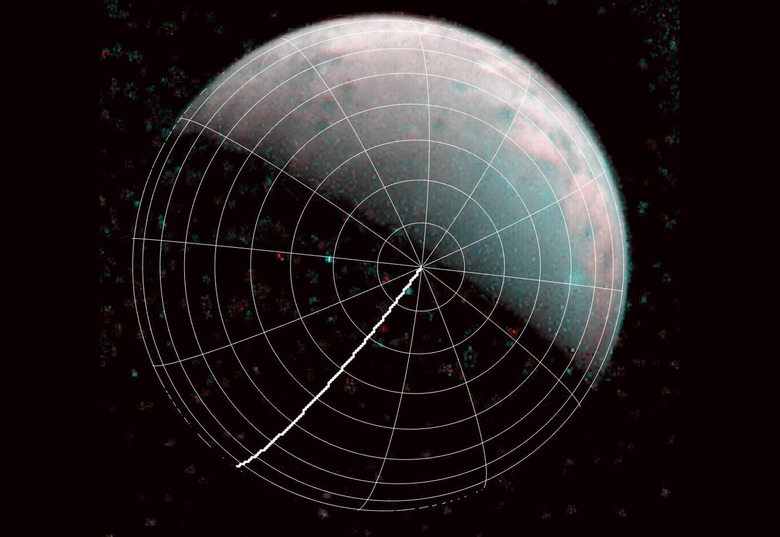NASA Publishes First Images Of Jovian Moon's Colorful North Pole
Jupiter, the massive, mysterious planet referred to by the adjective 'Jovian,' has multiple moons, one of which is called Ganymede. In a new announcement this week, NASA shared a series of images showing off Ganymede's North Pole, the first images to reveal this part of the celestial body. The photos were captured by the Juno spacecraft during its mission back in December 2019, but this is the first time they've been published.
NASA's Juno spacecraft spent last year traveling to Jupiter, where it ultimately performed a flyby. On the way there, the spacecraft used its instruments to capture data on the Jovian moons, including Ganymede, which is the only moon in our solar system that features its own magnetic field. NASA explains that the lack of atmosphere on Ganymede allows plasma to bombard the moon's poles, resulting in major changes to the ice in these regions.
Juno offered scientists the first opportunity to study this phenomenon and its impact on the surface ice, according to NASA, which explains that its spacecraft provided humanity with its first full look at the moon's North Pole.

Unlike ice on Earth, the ice on Ganymede's poles isn't crystalline — this is because it is constantly subjected to the impact of plasma from Jupiter's magnetosphere. The result is what NASA calls 'amorphous' ice, at least at the moon's poles, which produces a different infrared signature compared to the ordinary crystalline ice found around the moon's equator.
Juno managed to capture 300 images of the Ganymede North Pole from a distance of around 62,000 miles as it flew past in late 2019. These images have a resolution of around 14 miles per pixel, helping provide information that will influence other planned future missions to Ganymede and Jupiter. The amorphous ice appears in the images with a different color than the surrounding crystalline ice.
